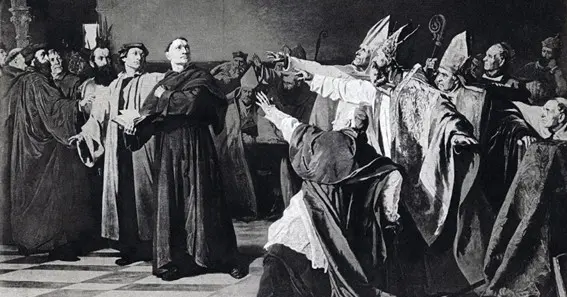The question why did martin luther visit rome has intrigued historians for centuries. As a young scholar and monk, Martin Luther’s trip to Rome was not just a pilgrimage—it was a profound journey that exposed him to the grandeur, excesses, and contradictions of the medieval Church.
Early in his career, Luther traveled to Rome to study and experience the heart of Catholicism firsthand. However, his observations of the papal court, its lavish ceremonies, and the stark disparity between religious ideals and the reality of Church life deeply influenced his evolving perspective. This trip would later catalyze his critiques of ecclesiastical corruption, ultimately laying the groundwork for the Protestant Reformation.
Martin Luther’s Journey to Rome
Martin Luther’s visit to Rome occurred during his formative years as a monk and scholar. At that time, a pilgrimage to Rome was considered an essential part of a devout Christian’s education and spiritual development. Luther intended to immerse himself in the splendor of the Eternal City, witness the rituals of the Vatican, and study the artistic and architectural masterpieces that symbolized the Church’s authority.
Yet, what he encountered was a Church that was not entirely aligned with the purity of its teachings. The ostentatious display of wealth and power contrasted sharply with the humble message of the Gospel, leaving a lasting impression on him. Over time, these experiences would become key elements in his later criticisms and reformative ideas.
FAQ Section:
- Q: When did Martin Luther visit Rome?
A: Martin Luther’s visit to Rome took place in the early 16th century, during his formative years as a monk and scholar, before his break with the Catholic Church. - Q: What were Luther’s primary reasons for visiting Rome?
A: Luther went to Rome to undertake a pilgrimage, study the Church’s rich traditions and art, and experience the heart of Catholic worship—all considered essential for spiritual and scholarly growth at the time. - Q: How did his visit to Rome influence Luther’s later views?
A: Witnessing the opulence and excesses of the papal court contrasted with the Church’s spiritual ideals, contributing to Luther’s growing disillusionment with ecclesiastical corruption and eventually fueling his calls for reform. - Q: Did Luther’s journey to Rome have any immediate impact on his career?
A: While his trip was initially meant for spiritual enrichment and academic learning, the discrepancies he observed planted early seeds of dissent that later blossomed into the critiques central to the Protestant Reformation. - Q: Are there any written accounts of Luther’s impressions of Rome?
A: Yes, Luther’s letters and later writings reflect his observations and evolving attitudes toward the Church, offering insights into how his Roman experience influenced his reformist ideas.
Conclusion:
The question why did martin luther visit rome opens a window into the early influences that shaped one of history’s most significant reformers. His journey, initially meant to deepen his faith and knowledge, instead exposed him to the contradictions within the Church—experiences that would later fuel his challenge to its authority and spark a movement that changed the course of Western history.










